Japanese cars
Honda’s Latest

As with many other automotive manufacturers, Honda is on the hunt for having its fleet become fully electrified. Honda’s vision is to have 100% of its new vehicles with zero emissions by 2040. There are some neat EV models in the pipeline, but also some vehicles that help transition the gap from petrol to hybrid to 100% electric. Honda’s 2022 Civic models are set to be enjoyable.
Honda recently announced that their Prologue SUV, which will be Honda’s first new EV sold in big volume, will be a battery-electric vehicle (BEV) that will go on sale in 2024. It is likely that the Prologue SUV will be an American-only seller first, so how that fits in with Australia remains to be seen. As EV infrastructure expands, and customer interest grows nationwide and globally, the company will expand sales and marketing efforts accordingly. Following the launch of the Honda Prologue, the company will create additional EVs based on the new e-Architecture that is currently being developed and customer demand.
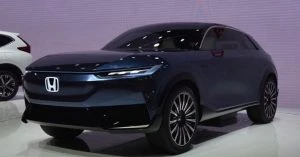
Honda Prologue SUV
Honda has a long history of being a leader in creating hybrid and electrified vehicles. Honda’s Insight still is a very good example of how a hybrid should perform, and it remains a strong seller with people who are looking for low emissions and frugality in fuel usage. As Honda prepares for the launch of the Honda Prologue for America, the company will introduce hybrid-electric systems to other core models to continue to reduce CO2 emissions while helping create a bridge for customers to move from fossil fuels to hybrid to EVs.
Honda’s management have stated that they are aware that customers who have a good experience with a hybrid vehicle are more likely to buy an electric vehicle in the future. We can see that their hybrid sales have increased over the last few years. Led by models such as the CR-V Hybrid and the Accord Hybrid, Honda just recorded its best-ever first-half year of electrified vehicle sales. The Insight has also sold well.
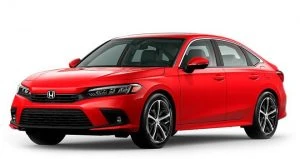
2022 Honda Civic Sedan
Now what about now? Let’s take a look at the all-new Honda Civic Hatchback! In 2022, Honda will be selling the latest Civic in Australia. The car is aimed predominantly at young buyers who are captured by its fastback design and sporty driving character. The new Civic will offer a slick-shifting 6-speed manual transmission as well as an automatic CVT option to go with the 2.0-liter normally aspirated motor or the 1.5-liter turbo engine. High-performance Si and Type R models are to be available, and they are cars I’ll be keeping my eyes out for.
The largest back seat to ever be inside a Civic Hatchback comes with 2022 models, and the cars also features new standards of safety technologies. All 2022 Honda Civic Hatchbacks include Honda’s new next-gen driver and front passenger airbags and an expanded Honda Sensing suite of driver-assistive and safety technology that adds Traffic Jam Assist and a smoother, more natural feeling to functions like Adaptive Cruise Control (ACC) and the Lane Keeping Assist System (LKAS). It will also include Collision Mitigation Braking System (CMBS) with Pedestrian Detection, Forward Collision Warning, and Road Departure Mitigation (RDM).
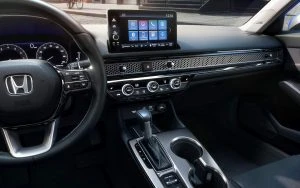
2022 Honda Civic Dash
2022 Honda Civic EX-L models will boast all the luxury features, so big color touchscreen with Apple CarPlay and Android Auto integration, push-button start, partial digital instrumentation, blind-spot information (BSI), leather upholstery, an 8-way power driver’s seat, heated front seats, heated outside mirrors, a one-touch power sliding moonroof, dual-zone automatic climate control and LED headlights are the go.
Sportier Civics will have racy looks thanks to things like a short shifting 6-speed manual transmission (or CVT), Berlina Black 18-inch wheels, low-profile 235/40R-18 tyres, black exterior accents, an 8-speaker audio system, sport-specific upholstery, a leather-wrapped shifter and steering wheel, paddle shifters (CVT only) and sport pedals.
As the automaker prepares for the launch of the Prologue SUV in America, expect to see more hybrid variants of current core models to ease the transition to full electrification.
EVs and the Japanese Manufacturers
I like to get a feel for what is truly happening in the EV world by heading over to the Japanese to see what they are up to. The Japanese make the best cars in the world, at least from a reliability and practical point of view, so it makes sense to me to have a look at what their plans are when it comes to EV innovation, invention and implementation.
Mazda

Mazda MX 30 EV
Mazda is planning to introduce ‘Skyactiv Multi-Solution Scalable Architecture’ for hybrids, PHEVs and EVs in 2022, and they plan to offer three EV models, five PHEV models and five hybrid models sometime between 2022 and 2025. Mazda will also keep hybrids and PHEVs as part of their saleable new cars beyond 2030.
By the end of 2023, Mazda plans to show at least two plug-in hybrids by the end of the year.
In 2026 Mazda plans to show the platform for a new generation of EVs in the early part of the year.
By 2030 Mazda plans to offer a hybrid or electric variant for every model that Mazda has in their line-up. However, even though Mazda will develop a dedicated EV platform by 2025, Mazda’s majority of vehicles beyond 2030 will be hybrids and plug-in hybrids, and, as such, Mazda is not about to stop developing its internal combustion engines anytime soon.
Honda
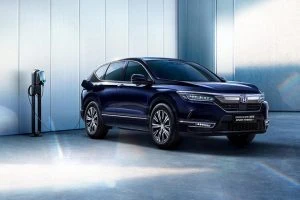
Honda EV Crossover
Honda plans to develop its own solid-state battery tech, rather than relying on outside developers.
By 2023, a Honda EV built in partnership with GM, reportedly a crossover, is expected to enter production.
Honda foresees that 40% of their models will be electric or hydrogen fuel-cell powered by 2030, climbing to 100% by 2040. Honda is one of just a handful of automakers alongside Toyota, Hyundai, and BMW, to devote plenty of their development energy into to hydrogen fuel-cell vehicles.
Toyota
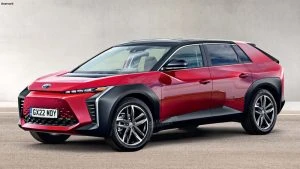
Toyota BZ EV Concept
By 2025, Toyota plans to launch 60 new hybrid, electric, or fuel-cell vehicles by the end of that year, and it also expects to have reached its goal of selling 5.5 million EVs each year. Their dedication to hydrogen fuel-cell vehicles is strong, and they remain big game players in this sort of technology.
Looking across the Tasman (where NZ’s PM, Jacinda Ardern, put her foot in it by claiming that Toyota would be providing EV utes in just 2 more years) it is evident that Toyota will not be putting all their eggs in one basket and going totally bent on EV production. Toyota is adamant that a slow EV uptake is more likely, and hence they would not be giving up on their particularly good hybrid engine technology any time soon.
Nissan

Nissan ids Concept EV
Nissan is the manufacturer of the highly successful Nissan Leaf EV Hatchback, which has been in production for some years now. By 2023, Nissan plans to have launched eight EVs by the end of the year and will be hoping to be on target to sell 1-million hybrid or electric vehicles, globally, per-year. Nissan states that their hybrid technology and their technology to improve their internal combustion engines won’t be stopping before 2030, at least.
Mitsubishi
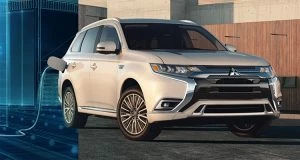
Mitsubishi Outlander PHEV
Mitsubishi has the marvellous Outlander PHEV, which has been in production for many years now. By 2030, Mitsubishi plans for 50% of its global sales to come from hybrid or electric vehicles. I guess that leaves 50% to be still made up of efficient internal combustion vehicles.
Subaru
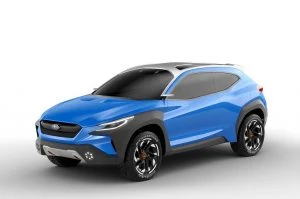
Subaru Solterra EV Concept
Subaru, by 2030, expects 40% of its global sales to come from hybrid or electric vehicles. By 2035, Subaru plans to have a hybrid or electric version of every vehicle in its line-up. Subaru seems to be singing off a similar song sheet to Toyota, where they both suggest that the hybrid vehicle will prove to be more popular in the short term, particularly as the EV infrastructure has a long way to go.
By 2050, Mazda, Mitsubishi, and Nissan have made bold plans to reach net-zero carbon emissions.
The big questions are: Will the EV-charging infrastructure match the manufacturer claims? Will people be able to afford an EV, let alone the huge cost to make their home charge ready, as the ideologically bold demands that some governments introduce along with big taxes? Who is going to pay for all of this?
I read a recent comment where a reader of ‘Car and Driver’ made a very informed comment:
“It’s a ‘no thanks’ on Li batteries from me. Lithium extraction has already spoiled the Atacama desert in Chile and now they have their sights set on the American West. I can reduce my CO2 footprint far more by just driving less than by purchasing a 100 kWh battery, and the 10-20T of CO2 that was released to make it. I’ll wait for fuel cells. As a Toyota driver… I have time.”
Kleva Kluger Is A Hefty Hybrid.
Toyota’s near twenty year old Kluger nameplate is joining the Toyota family of Hybrids. The big petrol powered machine, which has never had a diesel option, weighs in at a hefty two thousand kilos (dry) in its forthcoming Hybrid form. It will become the eighth Hybrid for the Japanese company.
The Kluger will come in 2WD or AWD petrol, or AWD Hybrid, and the Hybrid has the Toyota 2.5L petrol, whilst the Kluger stays with the familiar 3.5L V6 capacity in a new engine block. There willbe three trims levels, with the GX 2WD petrol starting from $47,650, the GXL 2WD petrol from $56,850, and Grande 2WD petrol from $68,900. Move to AWD and pricing runs at: GX AWD petrol from $51,650,
GXL AWD petrol from $60,850, and Grande AWD petrol from $72,900. The Hybrid range starts from $54,150 for the GX AWD hybrid, $63,350 for the GXL AWD hybrid, and $75,400 for the Grande AWD hybrid. Premium paint is a $675 option, with the Grande offering a rear seat entertainment system at $1,500. Sean Hanley, the Toyota Australia Vice President Sales and Marketing, said the addition of a hybrid option to one of Australia’s favourite family SUVs demonstrated Toyota’s commitment to driving sustainability forward. “The popularity of SUVs continues to grow and the new Kluger hybrid models mean that families can have all the space, comfort, refinement and versatility of a large SUV with a low environmental impact. In addition to that, the stylish new look, improved safety and high level of advanced technology makes the Kluger the perfect SUV for the modern family.
Sean Hanley, the Toyota Australia Vice President Sales and Marketing, said the addition of a hybrid option to one of Australia’s favourite family SUVs demonstrated Toyota’s commitment to driving sustainability forward. “The popularity of SUVs continues to grow and the new Kluger hybrid models mean that families can have all the space, comfort, refinement and versatility of a large SUV with a low environmental impact. In addition to that, the stylish new look, improved safety and high level of advanced technology makes the Kluger the perfect SUV for the modern family. Power comes from the 2.5L four and a pair of electric motors up front, backed by a single rear mounted engine. Toyota says the Hybrid’s combined power is 184kW, with the petrol engine contributing 142kW itself. Torque isn’t quoted for the Hybrid, however 242Nm is the 2.5L petrol engine’s figure and emissions of 128g/km. Jump to the 3.5L and 218kW is backed by 350Nm with drive being passed through a new eight speed auto.
Power comes from the 2.5L four and a pair of electric motors up front, backed by a single rear mounted engine. Toyota says the Hybrid’s combined power is 184kW, with the petrol engine contributing 142kW itself. Torque isn’t quoted for the Hybrid, however 242Nm is the 2.5L petrol engine’s figure and emissions of 128g/km. Jump to the 3.5L and 218kW is backed by 350Nm with drive being passed through a new eight speed auto.
The Hybrid has an electronic continuously variable transmission (e-CVT). The e-Four AWD system allows up to 100 per cent of drive to be sent through the front wheels or up to 80 per cent through the rear, depending on the conditions being driven in. This Dynamic Torque Control AWD system, which effectively disconnects the rear diff when AWD isn’t required, will be available in the GX and GXL. The Grande also receives a torque vectoring system, splitting torque to left or right as required. There will be three driving modes too, with Eco, Normal, and Sport offering a breadth of choice. Also included in the AWD models is a terrain adjustable program for Rock and Dirt, Mud and Sand soft-roading. Underneath the wheelhouse, the new Kluger is built on an updated chassis, called Toyota New Global Architecture or TNGA platform. The wheelbase is increased by 60mm longer wheelbase as is the overall length. It’s also somewhat broader than the current 2021 model for more interior room and stability on road. The suspension has been redesigned with multilink front and rear setups, with better overall ride quality, better handling, and better behaviour under braking conditions. Bigger discs at 340mm front and 338mm add their presence.
Underneath the wheelhouse, the new Kluger is built on an updated chassis, called Toyota New Global Architecture or TNGA platform. The wheelbase is increased by 60mm longer wheelbase as is the overall length. It’s also somewhat broader than the current 2021 model for more interior room and stability on road. The suspension has been redesigned with multilink front and rear setups, with better overall ride quality, better handling, and better behaviour under braking conditions. Bigger discs at 340mm front and 338mm add their presence.
An exterior revamp sees a lessening of the heavily squared-jaw look, with slim LED headlights and taillights, with the front fenders rolling inwards slightly at the top for a visual weight reduction. There is a new line for the rear wheel arches, with a sinuous curve rolling up from the doors that reminds of the current IndyCar rear structure. Wheels themselves will be 18 inch alloys on the GX and GXL, and bespoke Chromtec 20 inch alloys for the Grande. The increase in space means increased comfort and Toyota adds in sliding and 60/40 split centre row seats, with the seven seater having 60/40 split fold also. Trim material finish has gone up a grade with soft touch dash materials, a higher quality cloth trim in the GX, and faux leather for the GXL. That grade also has gained heated front pews. GX and GXL have an 8.0 inch touchscreen, Android and Apple compatibility with DAB and Bluetooth, plus satnav for the GXL along with tri-zone climate control. Grande adds in a sunroof, HUD, and an 11 speaker audio system from JBL.
The increase in space means increased comfort and Toyota adds in sliding and 60/40 split centre row seats, with the seven seater having 60/40 split fold also. Trim material finish has gone up a grade with soft touch dash materials, a higher quality cloth trim in the GX, and faux leather for the GXL. That grade also has gained heated front pews. GX and GXL have an 8.0 inch touchscreen, Android and Apple compatibility with DAB and Bluetooth, plus satnav for the GXL along with tri-zone climate control. Grande adds in a sunroof, HUD, and an 11 speaker audio system from JBL.
GX has dual zone, auto headlights and rain-sensing wipers as standard. Five USB ports make for family friendly smart usage. The increased wheelbase adds up to increase the cargo and third row space as well. Also upped is safety, with Toyota’s Safety Sense gaining traffic sign recognition, intersection turn assist, and emergency steering assist across the three, backing up the already substantial safety package.
The current expected release date for Australia is June.
2021 Subaru XV S & Premium: Private Fleet Car Review.
Subaru in Australia positions itself as a niche player. That may well be the case but it also does the brand a disservice. For example, March of 2021 saw 4,212 Subarus sold, with over 10,700 on a year-to-date basis. That puts the brand, for the month and YTD, ahead of Volkswagen, Honda, BMW, and Mercedes-Benz, and just over 300 shy of Nissan. It’s one of the brand’s best set of sales numbers. It’s an astounding result for the company here in Australia given the range is Outback, BRZ sports coupe, Forester, Impreza sedan and wagon, WRX, and Impreza wagon-based XV. There is no large SUV nor a two or four door, two or four wheel drive ute.
It’s an astounding result for the company here in Australia given the range is Outback, BRZ sports coupe, Forester, Impreza sedan and wagon, WRX, and Impreza wagon-based XV. There is no large SUV nor a two or four door, two or four wheel drive ute. We were able to drive, back-to-back, two examples of the late-2020 updated XV. In honesty, the naming system needs work, with a base model simply called XV, then L and a hybrid, Premium, then S and a hybrid version. S and then Premium is what we were supplied with however it would make more sense to change S to Premium and vice-versa.
We were able to drive, back-to-back, two examples of the late-2020 updated XV. In honesty, the naming system needs work, with a base model simply called XV, then L and a hybrid, Premium, then S and a hybrid version. S and then Premium is what we were supplied with however it would make more sense to change S to Premium and vice-versa.
For 2021 there have been some minor changes to pricing. The base model starts from $29,690 (up $450), with the L from $31,990. That’s an increase of $380. The Premium jumps by a heft $1,170 to $34,590, with the S up by $760 to $37,290. The Hybrids, now a pair rather than a single offering are unchanged at 435,490 and $40,790. These are not inclusive of on-road costs. Externally there are minimal sheetmetal differences between the two. The wheels themselves are different in design, plus have an inch of diameter in difference. The Premium has 17s, the S has 18s and a more striking design. The Premium sources rubber from Yokohama at 225/60, the S has Bridgestones at 225/55. A mid-life update in late 2020 saw minor tweaks to the front bumper and around the driving lights in the lower sections, plus a refresh of the grille.
Externally there are minimal sheetmetal differences between the two. The wheels themselves are different in design, plus have an inch of diameter in difference. The Premium has 17s, the S has 18s and a more striking design. The Premium sources rubber from Yokohama at 225/60, the S has Bridgestones at 225/55. A mid-life update in late 2020 saw minor tweaks to the front bumper and around the driving lights in the lower sections, plus a refresh of the grille. The Premium now has folding wing mirrors and they’re heated as well. The S has self-leveling headlights and they are auto on, as are the wipers. Unfortunately the Premium and below don’t have auto on lights, a safety issue in our opinion.
The Premium now has folding wing mirrors and they’re heated as well. The S has self-leveling headlights and they are auto on, as are the wipers. Unfortunately the Premium and below don’t have auto on lights, a safety issue in our opinion.
There is an extensive colour palette too, including Lagoon Blue for the Hybrids. There is Crystal White, Dark Blue and Horizon Blue, Magnetite Grey and Crystal Black, along with Cool Grey, Ice Silver, Plasma Yellow and Pure Red. On the road the pair have gained suspension updates too, with a change to the front providing a slightly more precise handling. The front has MacPherson struts & coil springs, with the rear having double wishbones. Although ostensibly there’s been no change to the rear it feels slightly softer and more compliant over the smaller ruts and bumps. It’s quick to damp out any intrusioons from the road however we did notice some bump steer and a slight skip sideways over road joins.
On the road the pair have gained suspension updates too, with a change to the front providing a slightly more precise handling. The front has MacPherson struts & coil springs, with the rear having double wishbones. Although ostensibly there’s been no change to the rear it feels slightly softer and more compliant over the smaller ruts and bumps. It’s quick to damp out any intrusioons from the road however we did notice some bump steer and a slight skip sideways over road joins. Drivewise the engine and transmission are unchanged, with the 2.0L flat four working quite handily with the CVT. It’s modestly powered at 115kW, with torque a handy 196Nm. The trick to extracting the best from the CVT is to not go heavy and hard from the start on the accelerator.A light but progressive press seems to extract the best overall acceleration, with a linear growth in speed, rather than the more traditional feel of slipping under pressure.
Drivewise the engine and transmission are unchanged, with the 2.0L flat four working quite handily with the CVT. It’s modestly powered at 115kW, with torque a handy 196Nm. The trick to extracting the best from the CVT is to not go heavy and hard from the start on the accelerator.A light but progressive press seems to extract the best overall acceleration, with a linear growth in speed, rather than the more traditional feel of slipping under pressure.
There is manual shifting available via paddle shifts, which can be quite handy in certain driving conditions such as uphill traffic, providing the driver with more overall control. Having said that, the CVT in both did display some of the traits they’re known for, with sensations of surging at low speed, but we also have to say that they weren’t as noisy as we’ve experienced. The drive system now has the SI Drive, an electronic program that adds some sporting spice to the engine’s mapping and the the changes in the CVT’s seven preset ratios. The S mode sharpens the throttle response and the XV feels sprightlier, zippier, and makes for better highway manouvering. The steering itself has some weight to it, but not so that it’s fighting the AWD system. It’s quick in response, and is ratioed for a tight 10.8 metre turning circle. The AWD system is naturally well sorted with no noticeable pull from either end but the grip levels are noted when hunting corners at speed.
The drive system now has the SI Drive, an electronic program that adds some sporting spice to the engine’s mapping and the the changes in the CVT’s seven preset ratios. The S mode sharpens the throttle response and the XV feels sprightlier, zippier, and makes for better highway manouvering. The steering itself has some weight to it, but not so that it’s fighting the AWD system. It’s quick in response, and is ratioed for a tight 10.8 metre turning circle. The AWD system is naturally well sorted with no noticeable pull from either end but the grip levels are noted when hunting corners at speed.
Economy on both finished smack on 7.0L/100km, equaling the quoted economy figure on the combined cycle. However, our figures were on a our traditional 70/30 urban to highway, with Subaru quoting 8.8L/100km for the urban cycle. It’s a reasonable highway cruiser, with the revs ticking over just below 2,000 at Australian limits. It’s quiet, too, with the engine only showcasing its metallic keen and the boxer warble from the exhaust when pressed.
Safety for the Premium sees the “Vision Assist” package added in, with the Blind Spot Monitor, Lane Change Assist, Rear Cross Traffic Alert, automatic braking in reverse if an object is sensed, and a front view monitor via a left wing mirror camera. The whole range has seven airbags including a kneebag.  All but the entry level version have the Eyesight package which includes Adaptive Cruise, Brake Light Recognition which alerts the driver to say the vehicle ahead has moved on, Lane Departure Warning, and Lane Keep Assist. The latter is less aggressive in its workings than that found in the two Korean brands. Tyre Pressure Monitoring is standard, however, across all models.
All but the entry level version have the Eyesight package which includes Adaptive Cruise, Brake Light Recognition which alerts the driver to say the vehicle ahead has moved on, Lane Departure Warning, and Lane Keep Assist. The latter is less aggressive in its workings than that found in the two Korean brands. Tyre Pressure Monitoring is standard, however, across all models. The S ups the ante thanks to Subaru’s X-Mode, a preprogrammed soft-road mode for snow or mild off-roading. There’s a bit of extra “looxshoory” with memory seating for the driver, heating but no venting for the front seats, good looking stitching across the dash and binnacle, piano black gloss trim, and auto dipping wing mirrors.
The S ups the ante thanks to Subaru’s X-Mode, a preprogrammed soft-road mode for snow or mild off-roading. There’s a bit of extra “looxshoory” with memory seating for the driver, heating but no venting for the front seats, good looking stitching across the dash and binnacle, piano black gloss trim, and auto dipping wing mirrors.
The expected user controls such as Info on the lower left of the steering wheel remain, showing a multitude of options on the dashboard’s upper screen. The 6.3 inch main screen stays with its frustrating lack of information being fully displayed as in artist and song title, whilst otherwise remaining easy to read and use. Premium has cloth covering in the centre of the seats and it’s a funky mix of bright yellow stitching contrasting with the light grey cloth and black leather. The interior door handles have a faux carbon-fibre inset, with the S having a higher quality sheen. The S also has alloy pedals and footrest. The rear seats have a fold-out centre section with two cupholders.
Premium has cloth covering in the centre of the seats and it’s a funky mix of bright yellow stitching contrasting with the light grey cloth and black leather. The interior door handles have a faux carbon-fibre inset, with the S having a higher quality sheen. The S also has alloy pedals and footrest. The rear seats have a fold-out centre section with two cupholders. Neither have a charge pad for smartphones nor a powered tailgate. There are 12V sockets up front but no rear seat ports. Cargo space is 310L with the rear seats up, 765L when they’re folded. The spare is a temporary or space saver. With the XV being the same body as the Impreza hatch, but raised in ride height, it makes for loading the cargo bay just that little bit easier thanks to less bending down.
Neither have a charge pad for smartphones nor a powered tailgate. There are 12V sockets up front but no rear seat ports. Cargo space is 310L with the rear seats up, 765L when they’re folded. The spare is a temporary or space saver. With the XV being the same body as the Impreza hatch, but raised in ride height, it makes for loading the cargo bay just that little bit easier thanks to less bending down. There’s a five year and unlimited kilometre warranty on the XV range, with capped price servicing with prices available via your dealer. There is also 12 months complimentary roadside assistance, and three years satnav maps update.
There’s a five year and unlimited kilometre warranty on the XV range, with capped price servicing with prices available via your dealer. There is also 12 months complimentary roadside assistance, and three years satnav maps update. At The End Of The Drive. It’s an axiom of driving a car that you’ll suddenly see “thousands” of the same car all of a sudden. That was so true during our fortnight with the S and Premium, with an XV seemingly on every corner.
At The End Of The Drive. It’s an axiom of driving a car that you’ll suddenly see “thousands” of the same car all of a sudden. That was so true during our fortnight with the S and Premium, with an XV seemingly on every corner.
There’s good reason for that; the Subaru XV is a willing performer, well priced, and not a bad drive once the vagaries of CVTs are understood. Economy is a plus too, so the hip pocket pain is minimised. Not unattractive to look at in the driveway is another plus, making the 2021 Subaru XV the smart choice.

